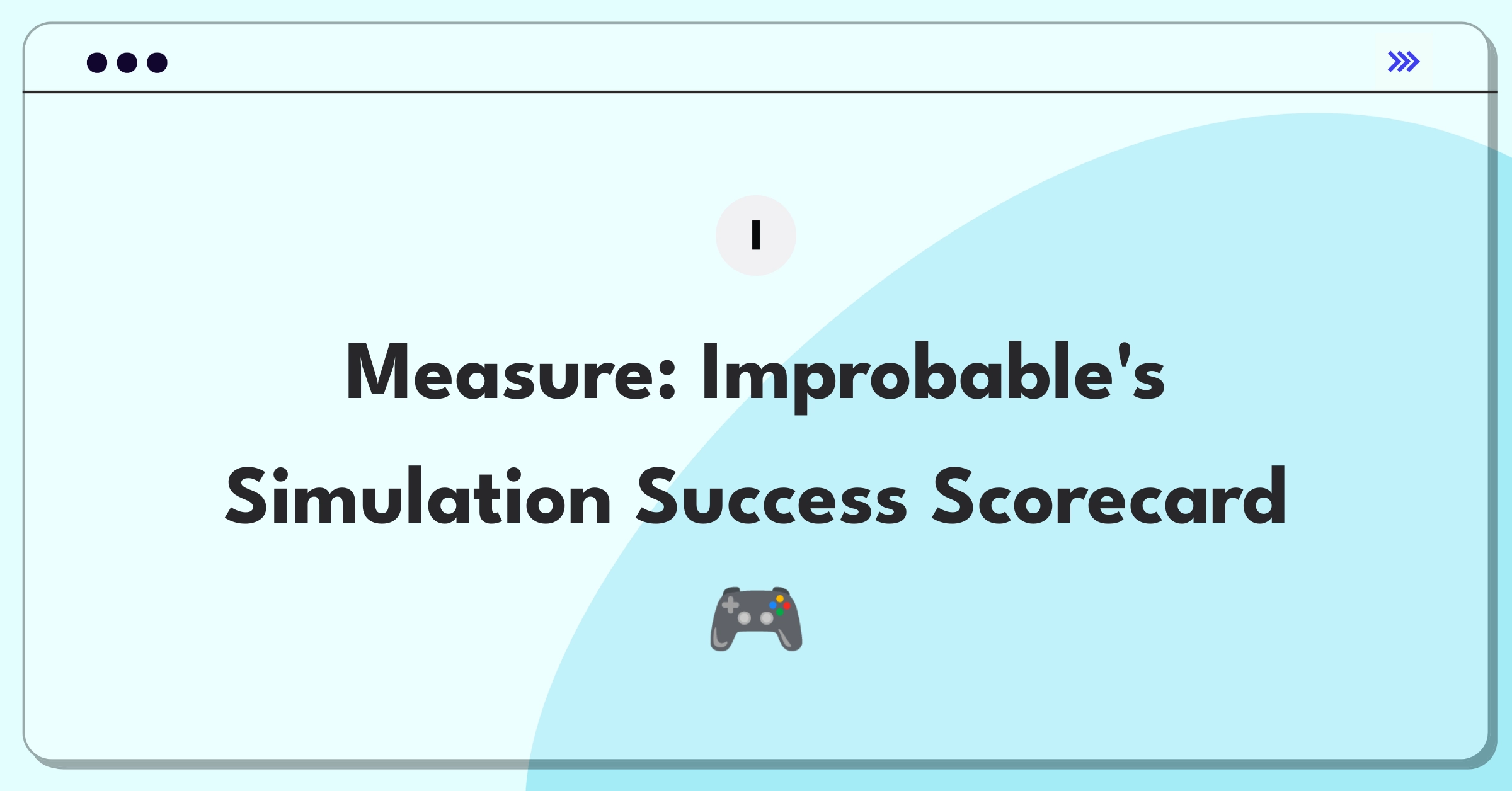Introduction
Defining the success of Improbable's distributed simulation technology requires a comprehensive approach that considers multiple stakeholders and metrics. To address this product success metrics challenge effectively, I'll follow a structured framework covering core metrics, supporting indicators, and risk factors while considering all key stakeholders.
Framework Overview
I'll follow a simple success metrics framework covering product context, success metrics hierarchy.
Step 1
Product Context
Improbable's distributed simulation technology is a cloud-based platform that enables the creation and operation of large-scale, complex virtual worlds. It allows developers to build and run massive multiplayer games, virtual environments, and simulations that were previously impossible due to computational limitations.
Key stakeholders include:
- Game developers and studios
- Enterprise clients (e.g., defense, urban planning)
- End-users (gamers, simulation participants)
- Improbable's investors and shareholders
The user flow typically involves developers integrating the technology into their projects, deploying simulations, and end-users interacting with the resulting virtual environments. Developers use Improbable's SDK to build their simulations, which are then deployed on Improbable's cloud infrastructure. End-users connect to these simulations through client applications, experiencing seamless, large-scale virtual worlds.
This technology fits into Improbable's broader strategy of revolutionizing online experiences and simulations across various industries. It positions the company as a leader in spatial computing and distributed systems.
Compared to competitors like Unity and Amazon Lumberyard, Improbable's technology offers superior scalability and more advanced simulation capabilities. However, it may have a steeper learning curve and higher initial integration costs.
In terms of product lifecycle, Improbable's distributed simulation technology is in the growth stage. It has moved beyond initial adoption and is now focusing on expanding its user base and use cases.
Software-specific context:
- Platform/tech stack: Cloud-based, using a proprietary distributed computing architecture
- Integration points: SDKs for major game engines, APIs for custom integrations
- Deployment model: Cloud-hosted with options for hybrid deployments
Subscribe to access the full answer
Monthly Plan
The perfect plan for PMs who are in the final leg of their interview preparation
$99 /month
- Access to 8,000+ PM Questions
- 10 AI resume reviews credits
- Access to company guides
- Basic email support
- Access to community Q&A
Yearly Plan
The ultimate plan for aspiring PMs, SPMs and those preparing for big-tech
$99 $33 /month
- Everything in monthly plan
- Priority queue for AI resume review
- Monthly/Weekly newsletters
- Access to premium features
- Priority response to requested question


.png)